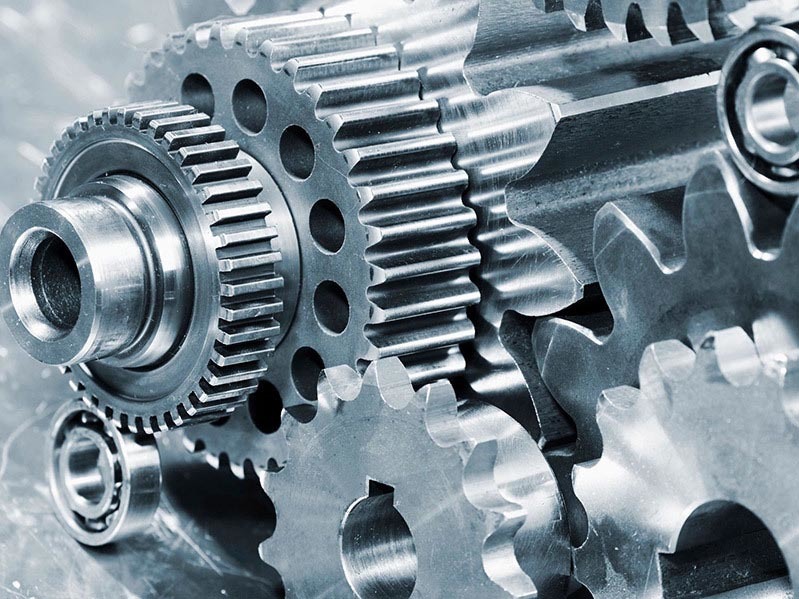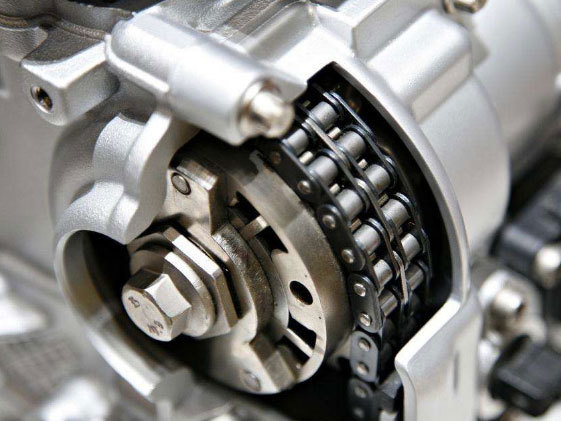News Center
Contact Information
Contact:+86-13706033548
Tel:+86-0593-6016566
Tel:+86-0593-6391548
Mail:fjzt0593@126.com
Fax:+86-05936391928
Address: Yanhu Development Zone, Fu'an City, Fujian Province
Diesel generator knowledge
Release time:
2024-06-13
Diesel generator refers to a generator driven by a diesel engine, which is composed of an internal combustion engine and a generator fueled by diesel. Among them, when the diesel engine is working, the air sucked into the cylinder of the diesel engine is compressed to a high degree due to the movement of the piston, reaching a high temperature of 500~700 ℃. Then the fuel is sprayed into the high-temperature air in the form of mist, and mixed with the high-temperature air to form a combustible mixture, which automatically ignites and burns. The energy released in combustion acts on the top surface of the piston, pushing the piston and converting it into rotating mechanical work through the connecting rod and crankshaft. The generator is a device that converts the mechanical work provided by the diesel engine into electrical energy. The working principle is based on the law of electromagnetic induction and the law of electromagnetic force. Therefore, the general principle of its structure is: use appropriate magnetic and conductive materials to form magnetic circuits and circuits that perform electromagnetic induction with each other to generate electromagnetic power and achieve the purpose of energy conversion. Due to the large capacity of the diesel generator set, start quickly, easy to operate, can be operated in parallel and continuous power supply for a long time, but also can run independently, not in parallel with the regional power grid operation, not affected by the power grid failure, high reliability, so in most schools in our country, enterprises, government and even families have a very broad application. However, due to the high cost of power generation, diesel generator sets are mainly used as emergency backup power sources, or in areas where mobile power stations and some large power grids have not yet reached. The speed of the diesel generator is usually below 1000 r/min, and the capacity is between a few kilowatts and several thousand kilowatts, especially the units below 200 kW are used more. It is relatively simple to manufacture. The torque output on the diesel engine shaft is periodically pulsating, so the generator works under severe vibration conditions. Therefore, the structural components of the diesel generator, especially the shaft, must have sufficient strength and rigidity to prevent these components from breaking due to vibration. In addition, in order to prevent the uneven rotation angular velocity of the generator caused by torque pulsation, causing voltage fluctuations and causing light flicker, the rotor of the diesel generator also requires a large moment of inertia, and the natural torsional vibration frequency of the shaft system should be compared with the diesel engine. The frequency difference of any alternating component in the torque pulsation is more than 20%, so as to avoid resonance and cause shaft breakage accidents.
Diesel generator refers to a generator driven by a diesel engine, which is composed of an internal combustion engine and a generator fueled by diesel.
Among them, when the diesel engine is working, the air sucked into the cylinder of the diesel engine is compressed to a high degree due to the movement of the piston, reaching a high temperature of 500~700 ℃. Then the fuel is sprayed into the high-temperature air in the form of mist, and mixed with the high-temperature air to form a combustible mixture, which automatically ignites and burns. The energy released in combustion acts on the top surface of the piston, pushing the piston and converting it into rotating mechanical work through the connecting rod and crankshaft.
The generator is a device that converts the mechanical work provided by the diesel engine into electrical energy. The working principle is based on the law of electromagnetic induction and the law of electromagnetic force. Therefore, the general principle of its structure is: use appropriate magnetic and conductive materials to form magnetic circuits and circuits that perform electromagnetic induction with each other to generate electromagnetic power and achieve the purpose of energy conversion.
Due to the large capacity of the diesel generator set, start quickly, easy to operate, can be operated in parallel and continuous power supply for a long time, but also can run independently, not in parallel with the regional power grid operation, not affected by the power grid failure, high reliability, so in most schools in our country, enterprises, government and even families have a very broad application. However, due to the high cost of power generation, diesel generator sets are mainly used as emergency backup power sources, or in areas where mobile power stations and some large power grids have not yet reached.
The speed of the diesel generator is usually below 1000 r/min, and the capacity is between a few kilowatts and several thousand kilowatts, especially the units below 200 kW are used more. It is relatively simple to manufacture. The torque output on the diesel engine shaft is periodically pulsating, so the generator works under severe vibration conditions. Therefore, the structural components of the diesel generator, especially the shaft, must have sufficient strength and rigidity to prevent these components from breaking due to vibration. In addition, in order to prevent the uneven rotation angular velocity of the generator caused by torque pulsation, causing voltage fluctuations and causing light flicker, the rotor of the diesel generator also requires a large moment of inertia, and the natural torsional vibration frequency of the shaft system should be compared with the diesel engine. The frequency difference of any alternating component in the torque pulsation is more than 20%, so as to avoid resonance and cause shaft breakage accidents.
Previous:
Related News
The throttle cannot be slammed after the diesel engine is cold started.
Insufficient cooling water of diesel generators will reduce their cooling effect, and the diesel engine will overheat due to lack of effective cooling; excessive cooling water and oil temperature will also cause the diesel engine to overheat. At this time, the main thermal load of the diesel generator cylinder head, cylinder liner, piston assembly and valve is heavy, and its mechanical properties such as strength and toughness drop sharply, which increases the deformation of the parts, reduces the matching gap between the parts, and accelerates the wear of the parts., In severe cases, cracks and stuck parts may occur. The overheating of the diesel generator will also worsen the combustion process of the diesel engine, causing the injector to work abnormally, the atomization is poor, and the carbon deposit increases. After the diesel generator set is turned off, the circulation of the cooling system water stops, the heat dissipation capacity is sharply reduced, and the heated parts lose cooling, which is easy to cause the cylinder head, cylinder liner, cylinder block and other parts to overheat, produce cracks, or cause the piston to expand excessively and get stuck in the cylinder liner. Inside. On the other hand, when the diesel generator stops without idling cooling, the friction surface will contain insufficient oil, and when the diesel engine starts again, it will aggravate the wear due to poor lubrication. Therefore, the diesel generator should be unloaded before flameout, and gradually reduce the speed, no-load operation for a few minutes. If the throttle is slammed, the speed of the diesel generator will rise sharply, which will cause some friction surfaces on the aircraft to wear severely due to dry friction. In addition, when the throttle is hit, the piston, connecting rod and crankshaft receive large changes in force, causing severe impact and easy damage to the parts. When the diesel generator is cold-started, due to the high oil viscosity and poor fluidity, the oil pump is insufficiently supplied, and the friction surface of the machine is poorly lubricated due to lack of oil, causing rapid wear, and even failures such as cylinder pulling and tile burning. Therefore, the diesel engine should run at idle speed after cooling and start to heat up, and then run with load when the standby oil temperature reaches 40 ℃ or above; the machine should start with a low-speed gear and drive for a certain mileage in each gear in sequence until the oil temperature is normal and the fuel supply is sufficient After that, it can be converted to normal driving. The diesel engine runs when the oil is insufficient. At this time, the insufficient oil supply will cause insufficient oil supply on the surface of each friction pair, resulting in abnormal wear or burns. For this reason, before the start of the diesel generator and during the operation of the diesel engine, it is necessary to ensure sufficient oil to prevent cylinder pulling and tile burning due to lack of oil.
2024-06-13
The working principle of silent generator
The working principle of the silent generator is basically the same as that of other generators, but it is different in terms of appearance and internal design. The silent generator usually consists of two main parts: the generator and the sound box. 1. Generator The generator is a device that converts mechanical energy into electrical energy, and it is also the core component of the silent generator. The generator usually consists of two parts, a rotating rotor and a stator. In the generator, the rotor generates electromotive force relative to the stator through the magnetic field, thereby generating electrical energy. 2. Static sound box The sound box is part of the sound insulation design and is usually composed of sound insulation materials and sound insulation structures. The interior of the sound box is divided into two soundproof rooms, one is the engine room and the other is the generator room. The engine room and the generator room are connected by an air passage. A fan blows air from the engine room to the generator room to maintain circulating ventilation. This removes exhaust gases, maintains operating temperature and extends generator life.
2024-06-13






